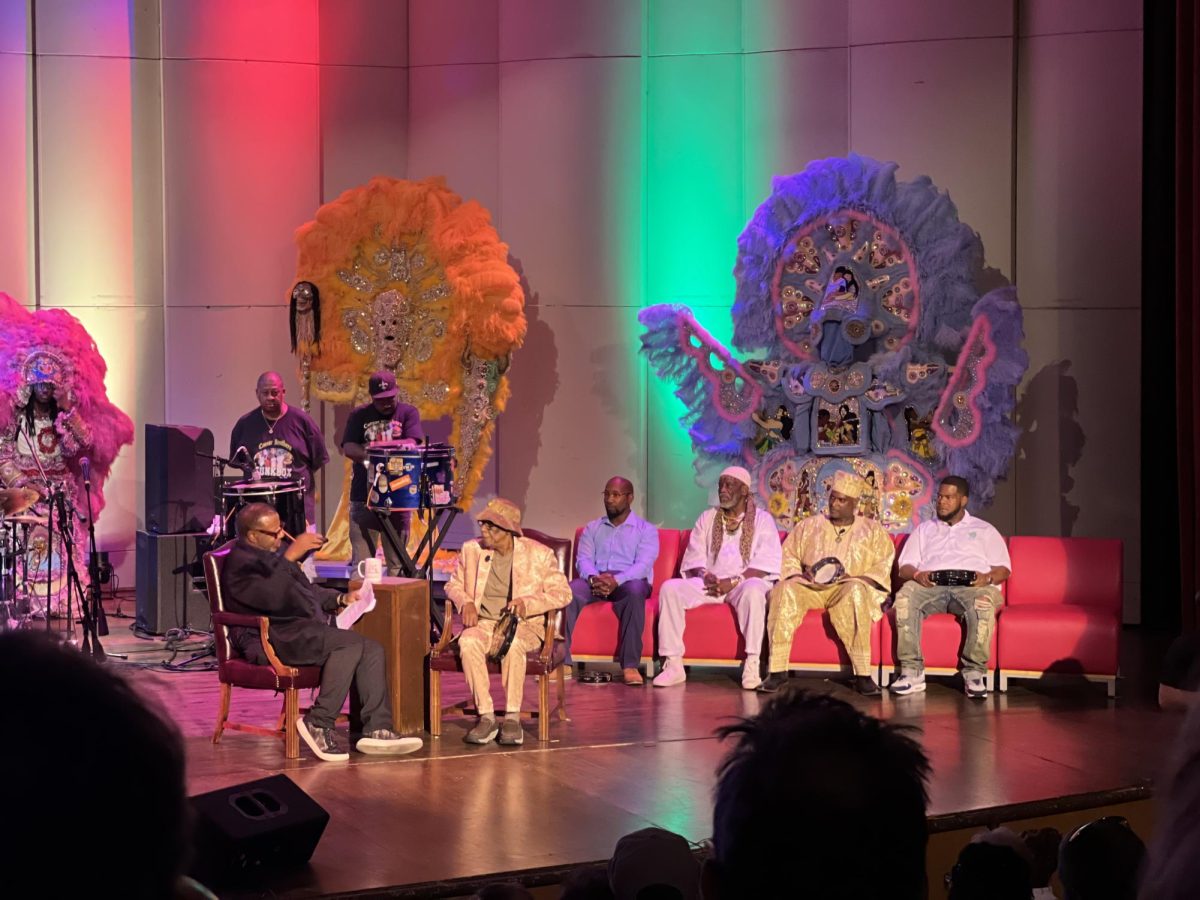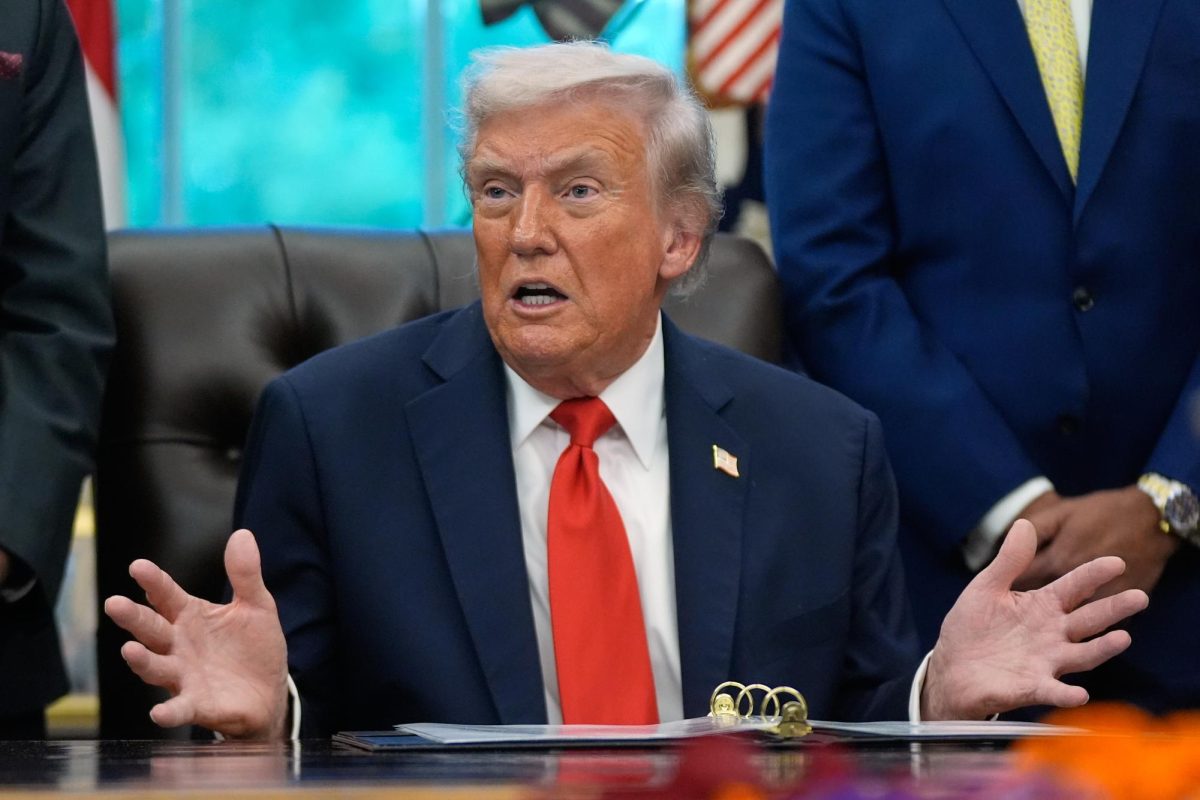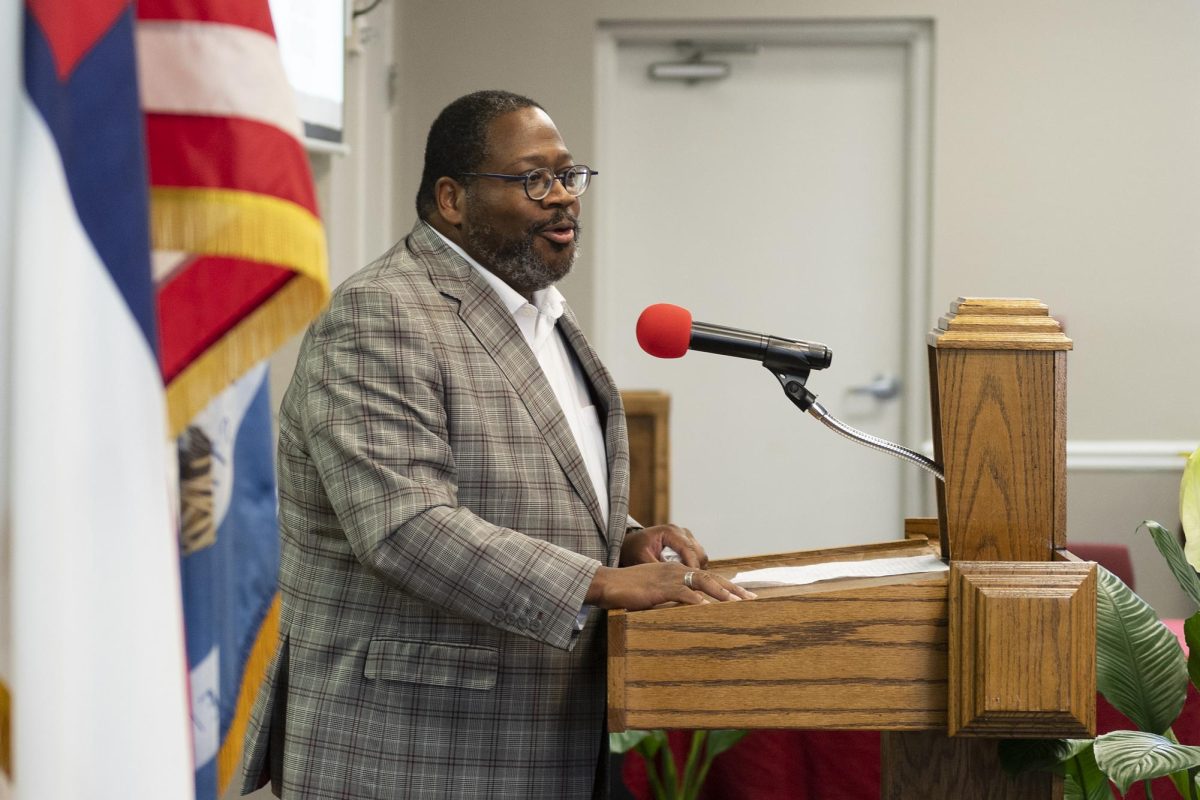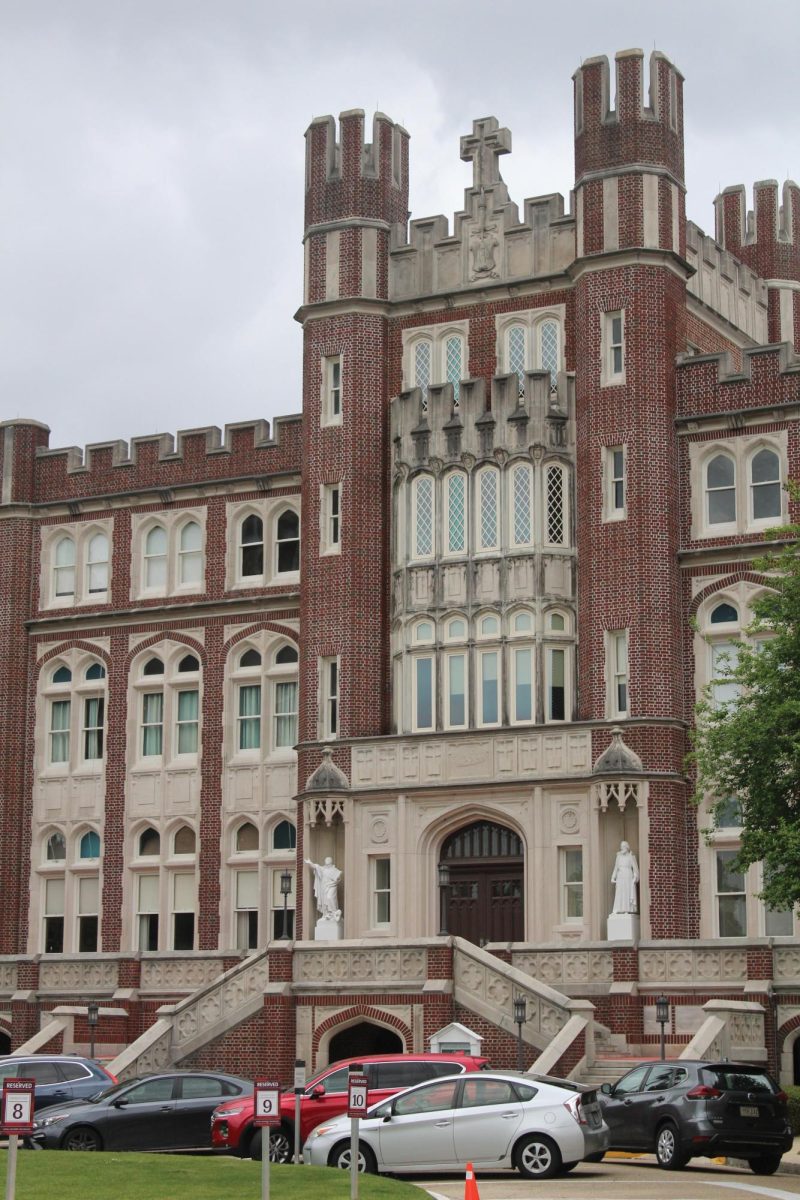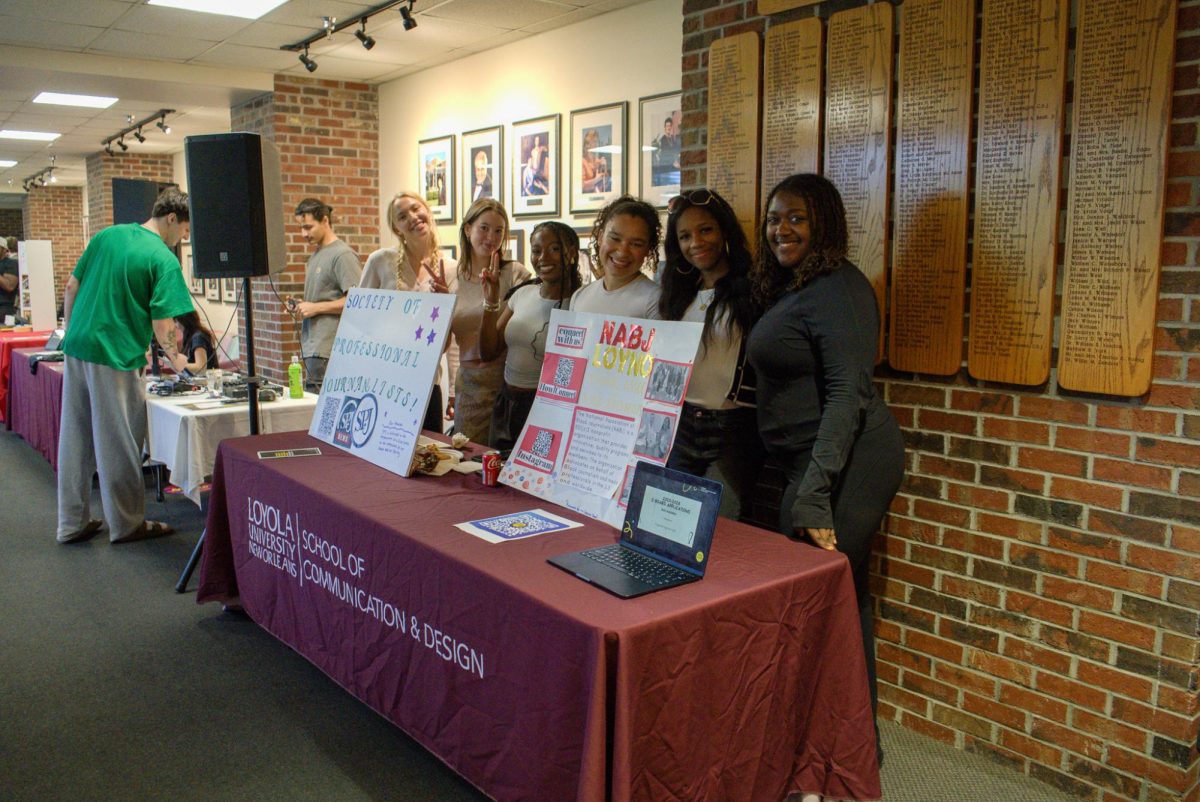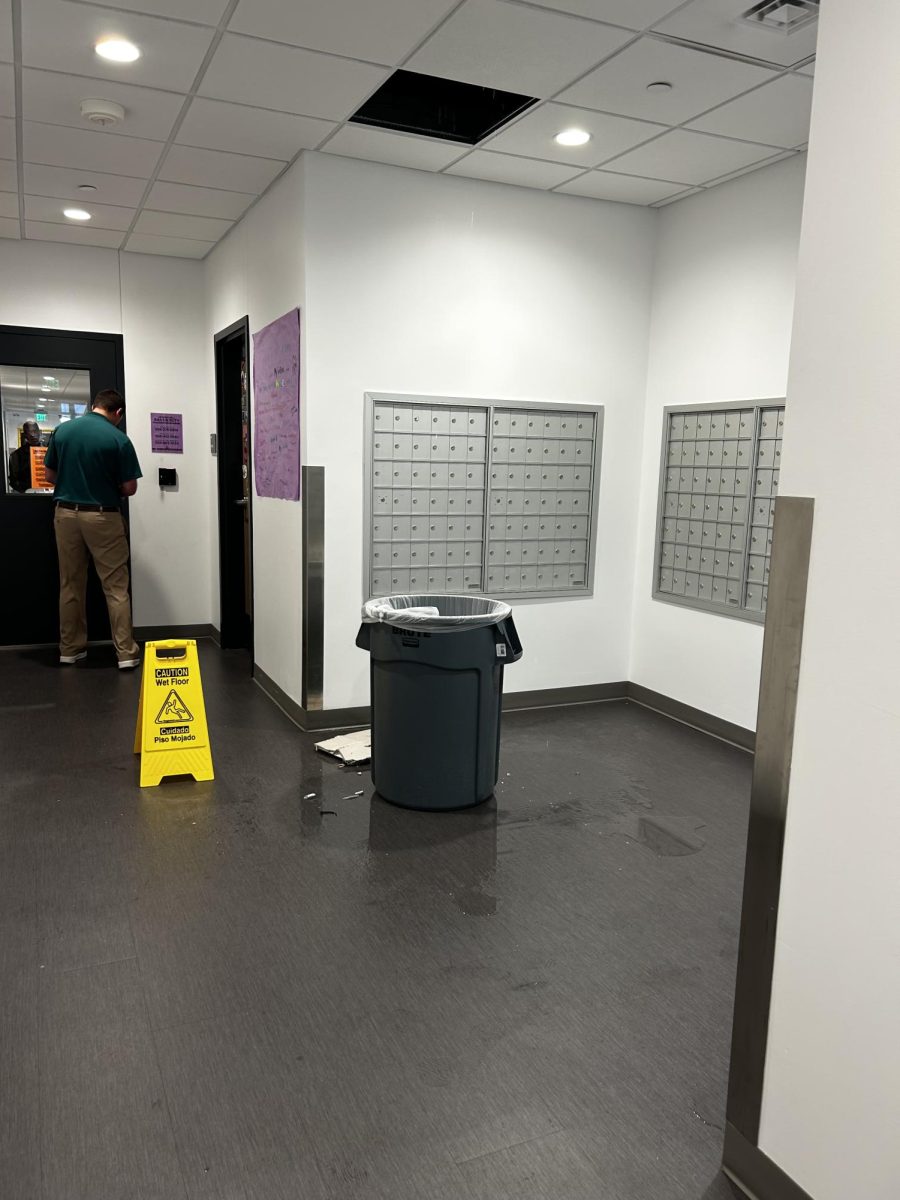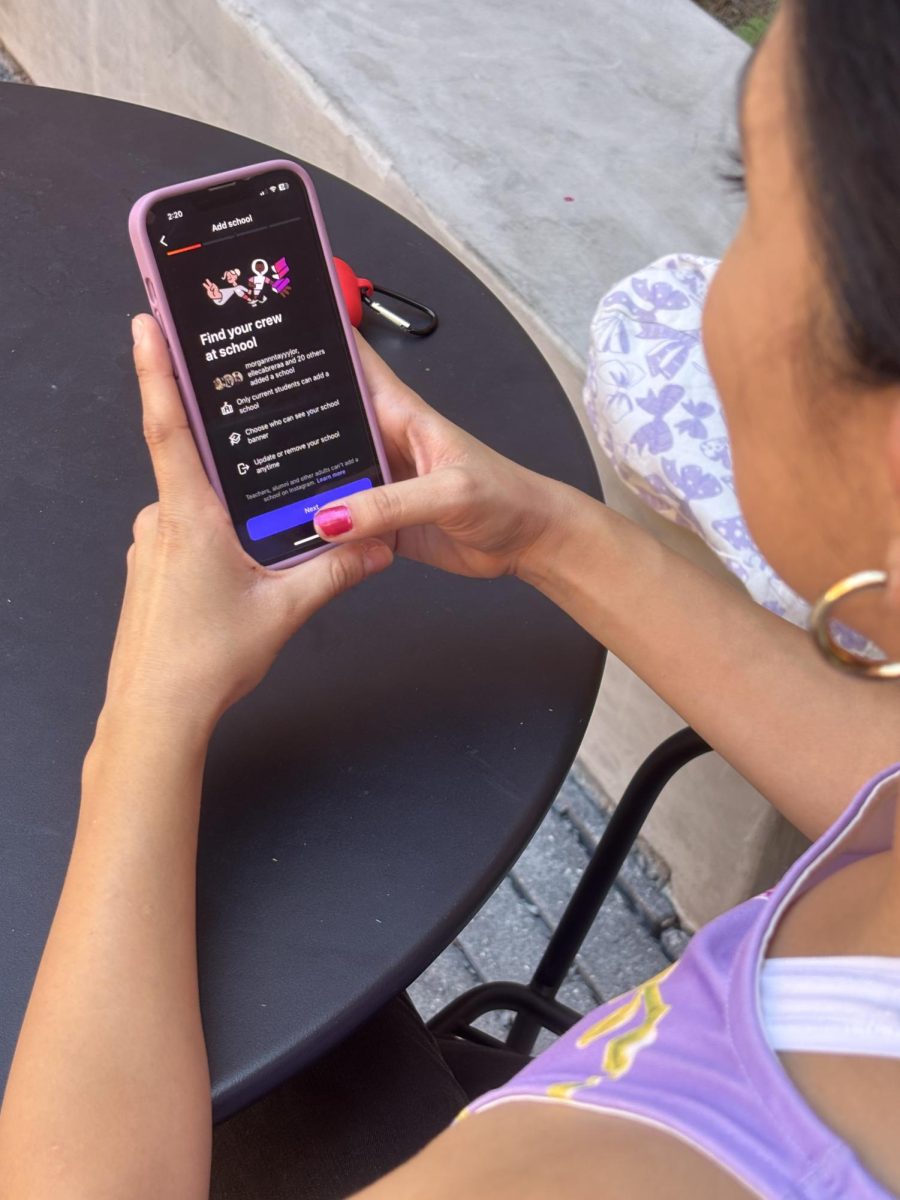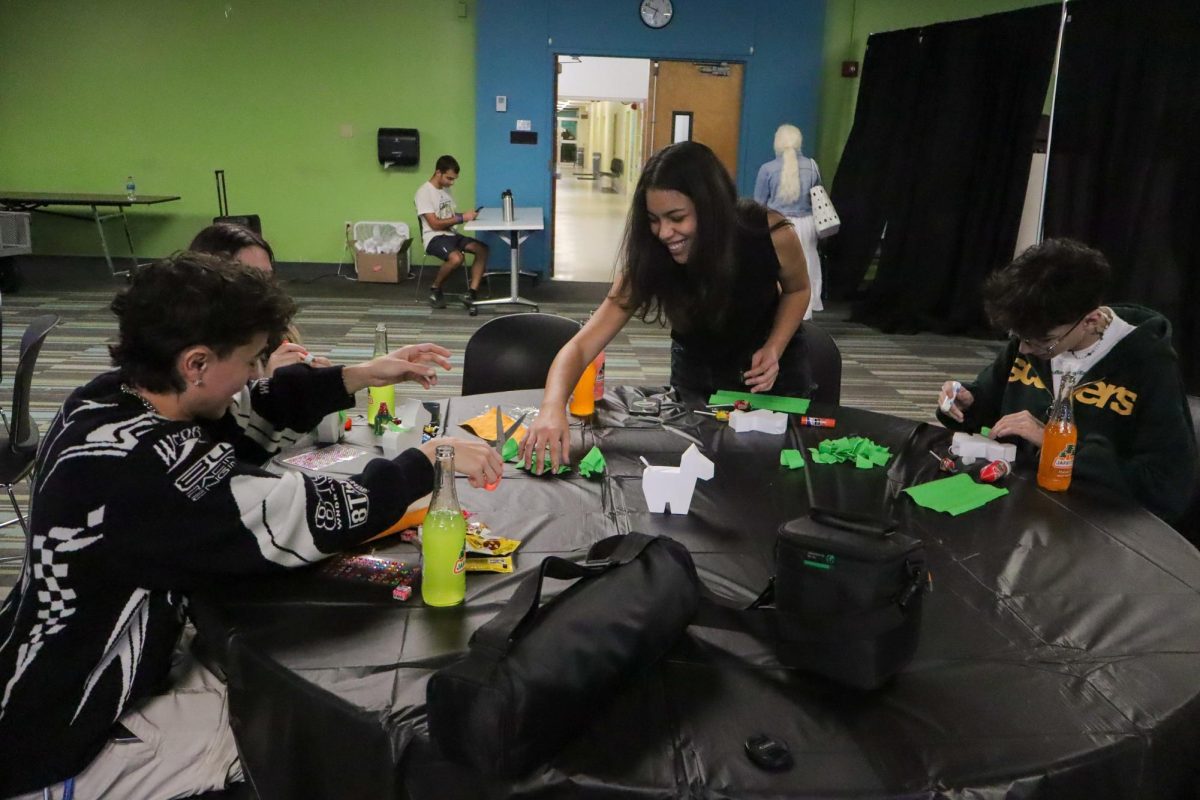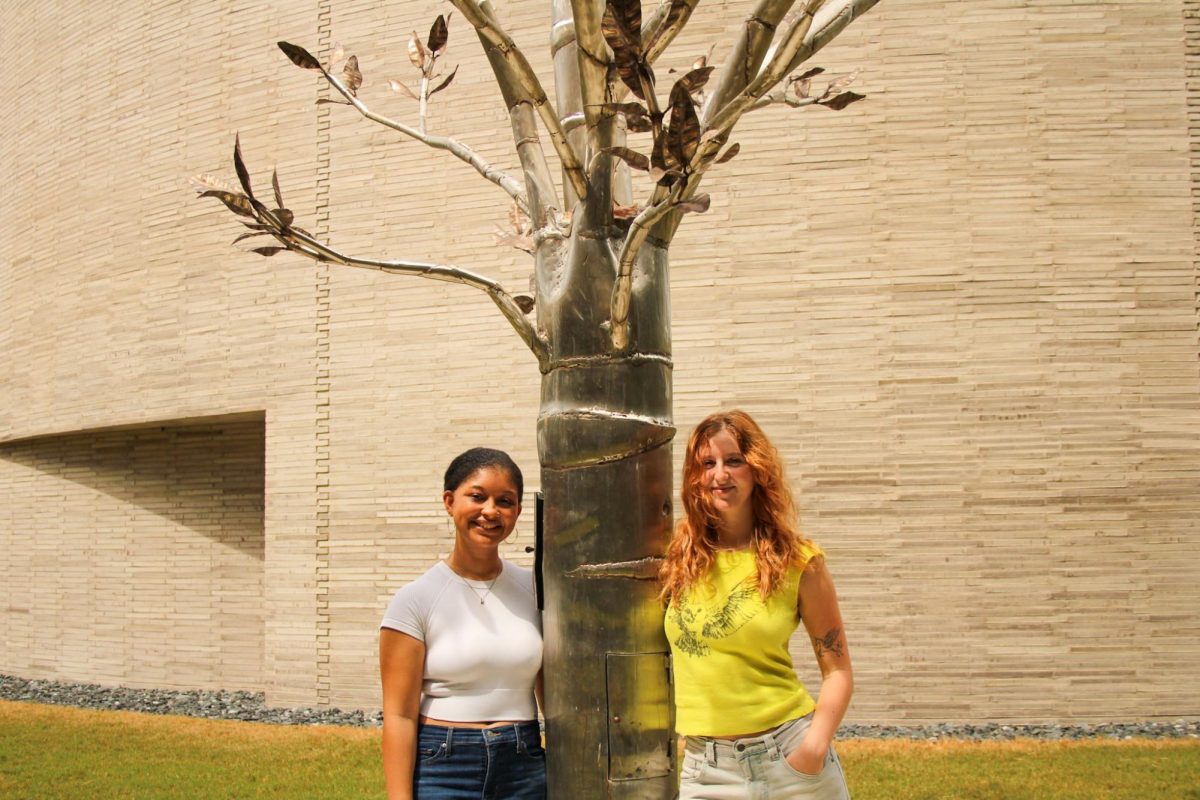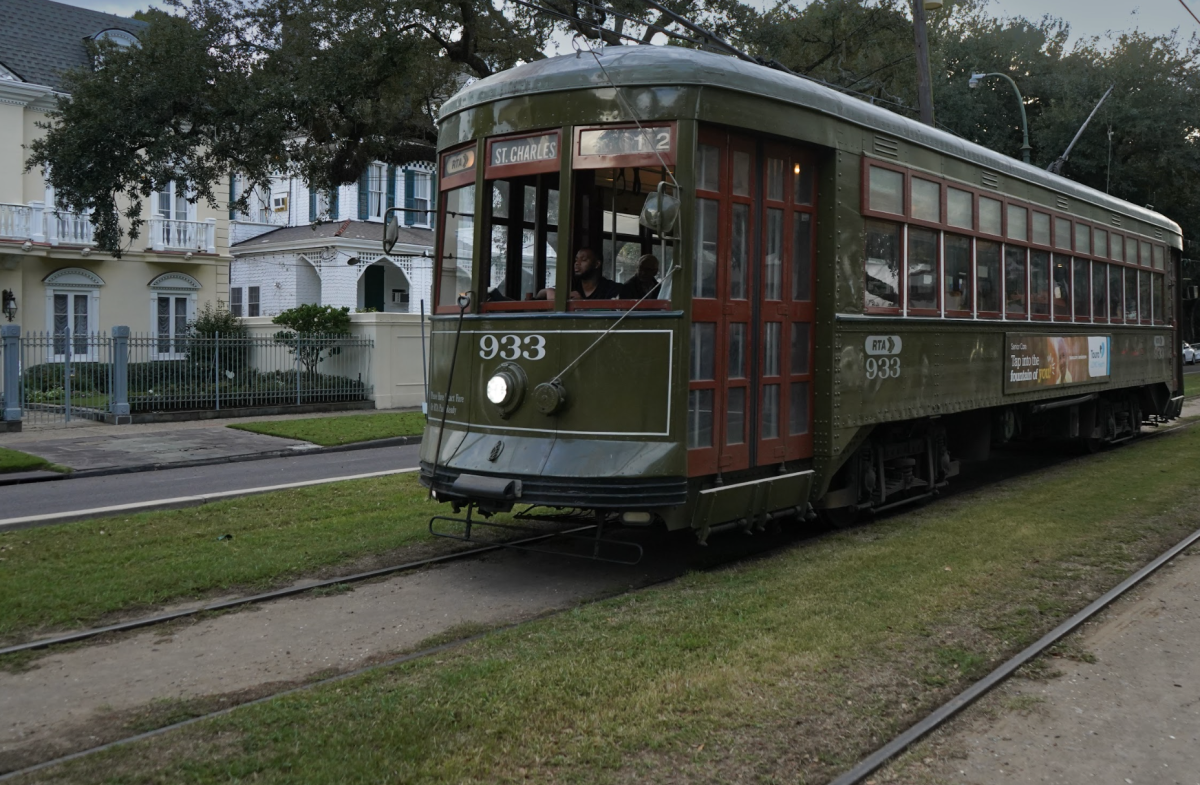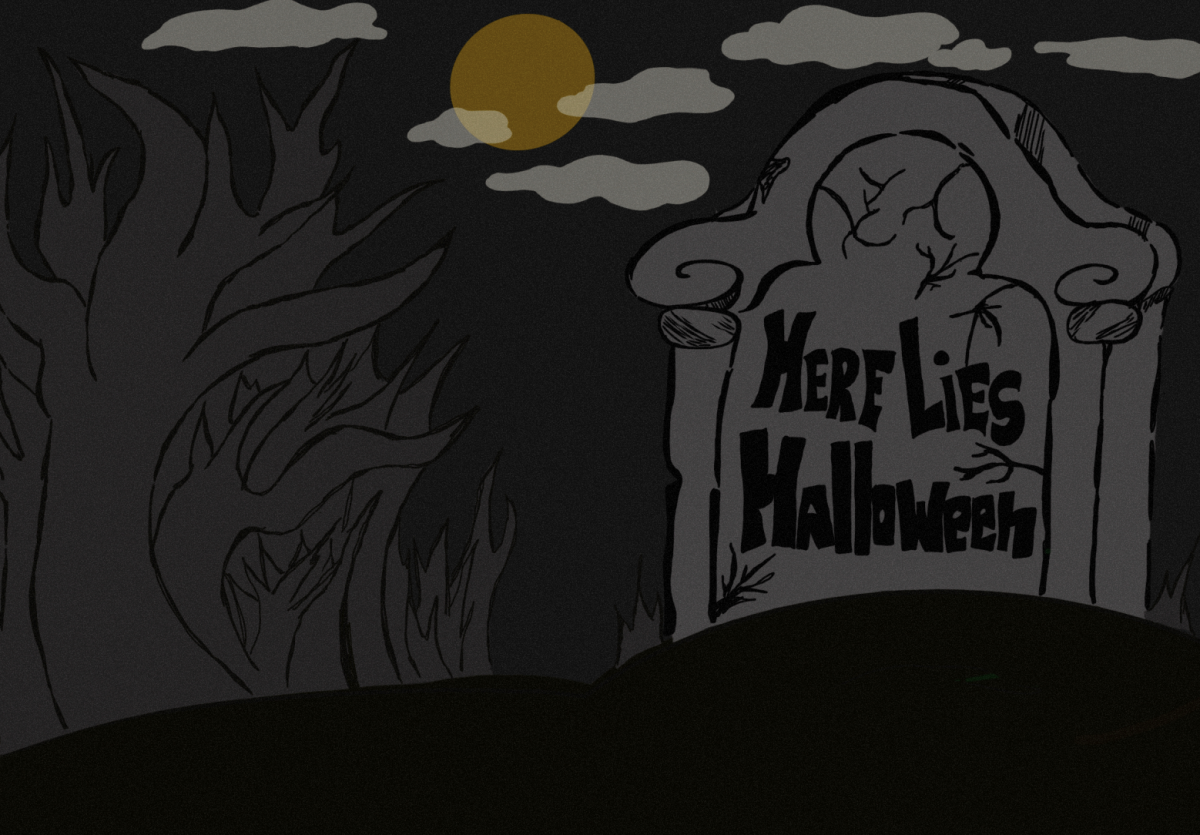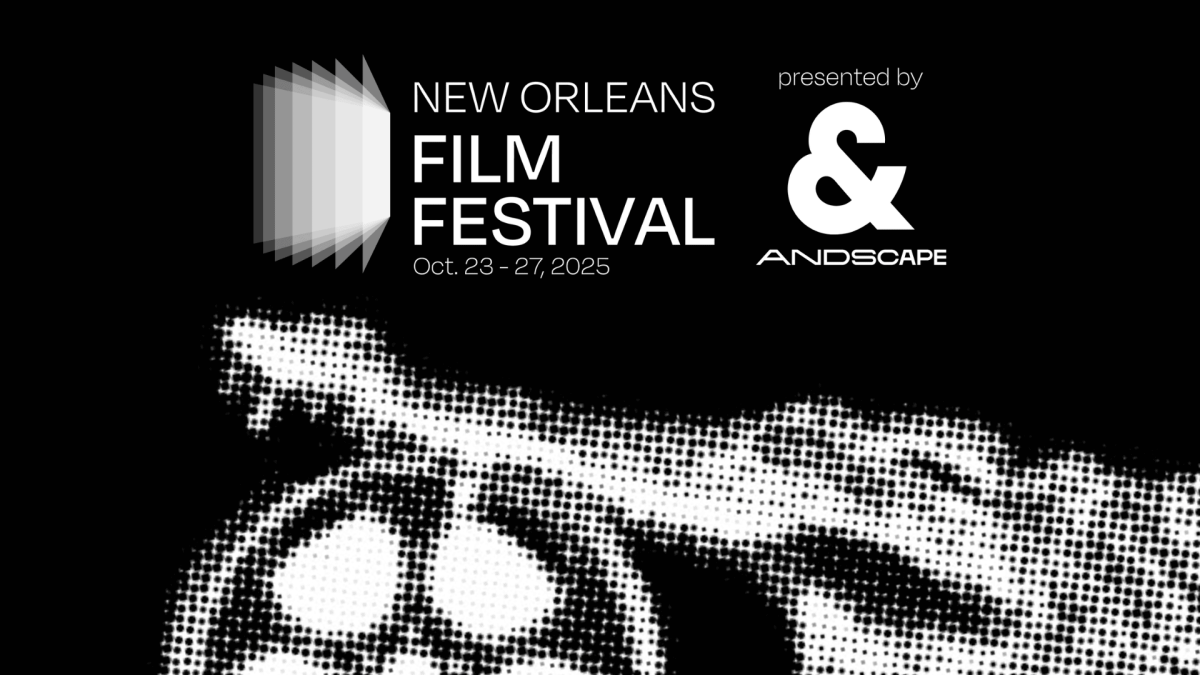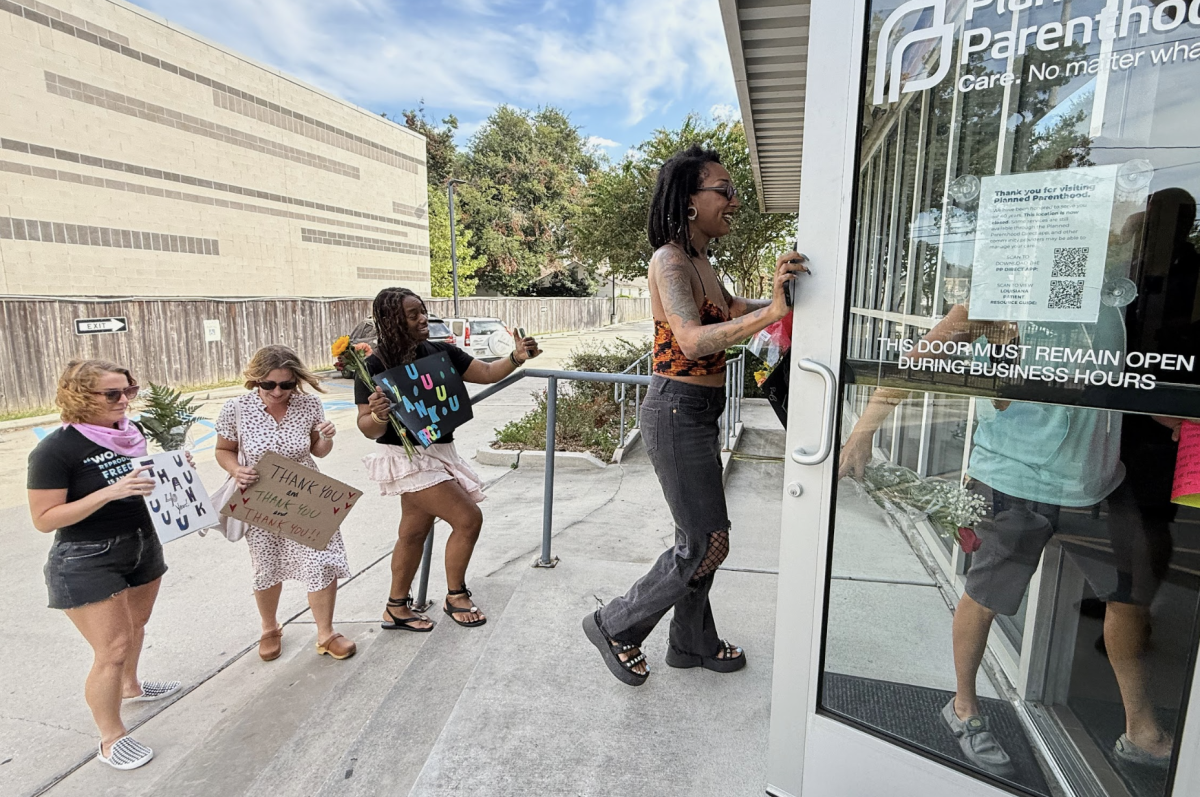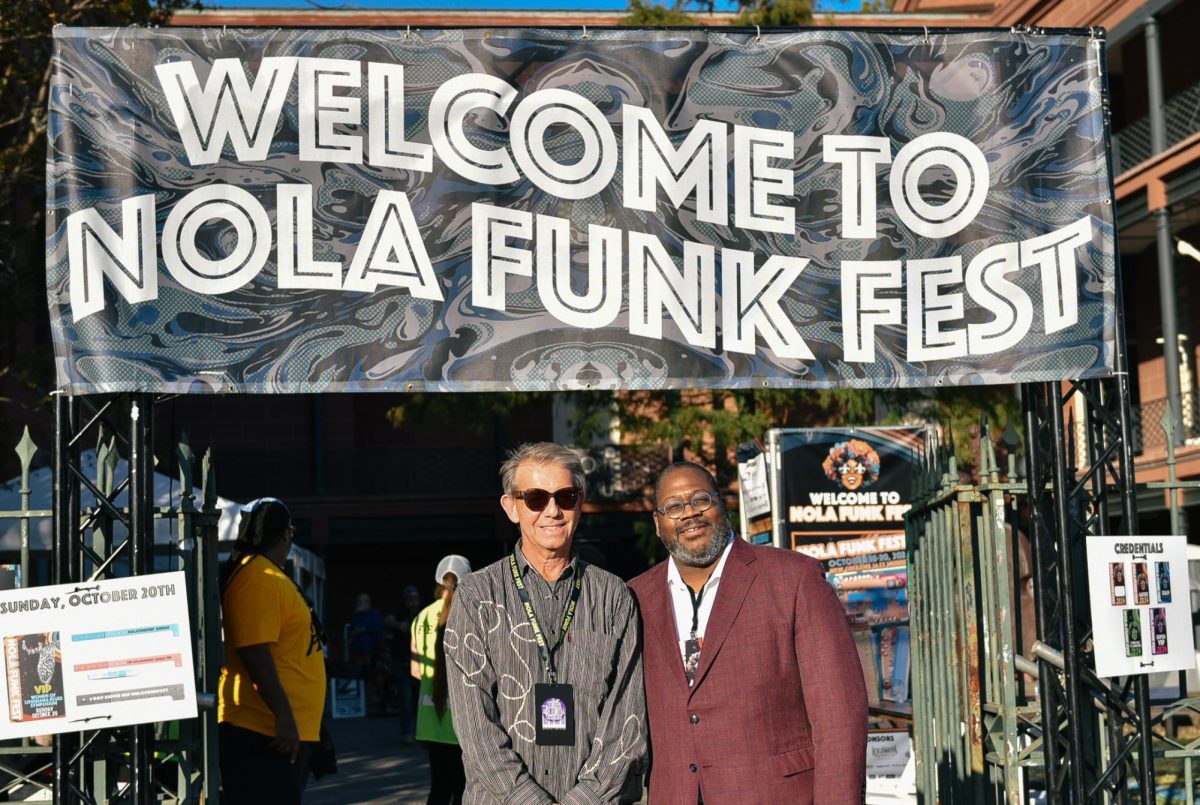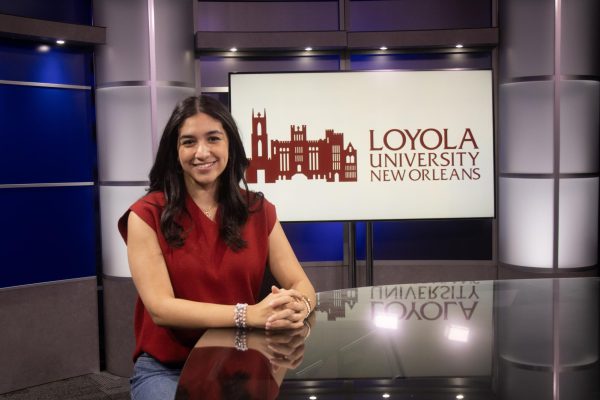The Behind the Mask event took a deeper look into the Black-Indian culture with a 2-hour performance of their music and traditional dancing in Roussell Hall. The Louisiana Music and Heritage Experience, Inc., along with Loyola’s School of Music, hosted the “Behind the Mask” event on Oct. 16. Produced by Board Member Big Chief Juan Pardo, WGNO’s Lebron Joseph interviewed five Big Chiefs, who spoke about their experience finding themselves in the culture and their dedication to their tribes.
“I started at 5 years old,” said Chief Terrence Mitchell of the Creole Wild West. “It’s a connection to a higher power, our ancestors from our tribe.”
Terrence explains how he felt chosen by the spirits to accept his heritage and work his way up to chief.
“There were two groups of oppressed people; the first place it starts is in your mind and heart. Before any beads are thrown, any thread is made, or cameras are on. You know exactly what story you want to tell in your mind, then you proceed with everything else,” he said.
The Black-Indian culture has deep roots and an ancestry that carried over hundreds of generations.
“As you get older, you realize you can’t detach DNA.” Chief Shaka Zulu of the Golden Feather Hunters said. “When you look at the tradition, we’ve always worn beads and feathers in Africa. So we’ve always had that African influence in us; we just don’t know it.”
Zulu explains what it means to him to be able to wear the crown that only the chiefs wear to lead their tribe through a dance:
“Once you put a mask and crown on, you’re not a person anymore; you become an entity. You’re an energy.”
The deeply rooted culture holds its sentiments far deeper than the physical world; it is also a culture connected with the spiritual world.
“When I got kicked out of my tribe. I tried to talk to so many others, but nothing. Then I realized I’ve talked to everybody but God.”
Chief Victor Harris of the Madlingo Warriors shares the one-on-one experience he had with God and how his chief name, Fi Ya Ya, came to be.
Standing by himself, alone, in a dark room, Harris spoke out loud: “God, why and how could this happen to me? Talk to me, Lord. When I didn’t hear a response, I thought to myself that God didn’t even want to talk to me.”
Harris felt hopeless and powerless.
“The next morning, I woke up. Faiyaya, my name, there was no such thing as that. Then I’m stretching after waking up, and I say the word “Fi Ya Ya,” and God answers.” He said. “He knew I needed rest, and he gave me that name and that’s how the spirit of Fi Ya Ya was born.”
After each tribe chief was interviewed, they took the stage and danced with two of their other tribe members in full costumes while the chief sang a traditional song. The auditorium was filled with cheers, and audience members started to get out of their seats and dance along. The music influenced the atmosphere around the event and created a fun and festive element to the evening.
The performance wrapped up with all five Big Chiefs bringing all their tribe members together and singing at least a few more songs so the crowd could dance along. This performance was filmed for a documentary that will be shown worldwide, so that the Black Masking Indian culture can continue to evolve and not be forgotten.


